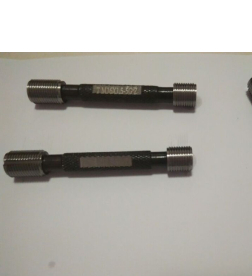Nov . 16, 2024 18:36 Back to list
gate valve and globe valve
Understanding Gate Valves and Globe Valves A Comprehensive Overview
When it comes to fluid control in pipelines, two prominent types of valves stand out gate valves and globe valves. Each serves a specific purpose and is favored in different situations due to their unique designs and operational capabilities. This article explores the intricacies of gate valves and globe valves, highlighting their features, applications, and key differences.
Gate Valves
Gate valves are widely used in various industrial applications due to their simple design and efficient operation. They are primarily employed to either fully open or close a pipeline, making them ideal for on/off control. Constructed with a movable gate that slides between two seats, these valves allow for minimal pressure drop when fully opened since they provide a straight-line flow path.
Characteristics
1. Design and Operation Gate valves use a wedge-shaped gate that can be raised or lowered by turning a handwheel. When the gate is lifted, the valve is open, allowing fluid to flow through without significant obstruction. Conversely, lowering the gate seals the flow, minimizing leakage.
2. Flow Characteristics Because of their design, gate valves are superior in services where the flow needs to be uninterrupted. They are often found in high-flow applications, such as water distribution systems and in the oil and gas industry.
3. Pressure Drop The straight flow path of a fully open gate valve results in a low pressure drop, making them efficient for applications with high flow rates.
Applications Gate valves are commonly used in waterworks, sewage treatment, and oil and gas pipelines. They are particularly effective in applications where the valve is either fully open or closed and is not frequently cycled.
Globe Valves
Globe valves, on the other hand, are designed for throttling flow, making them suitable for applications where flow control is essential. Their construction consists of a spherical body with an internal baffle that directs the flow. The closing member in a globe valve is usually a disc that moves perpendicular to the flow path.
gate valve and globe valve

Characteristics
1. Design and Operation Unlike gate valves, globe valves feature a more complex design. The flow of fluid is controlled by raising or lowering the disc inside the valve body. This allows for precise throttling capabilities.
2. Flow Control Globe valves are excellent for regulating flow rates, which makes them suitable for use in situations where fine adjustments are required. Their design allows for smoother flow control compared to gate valves.
3. Pressure Loss One downside of globe valves is that they generally produce more pressure drop compared to gate valves. This is due to the obstructed flow path when the valve is partially closed, which may not be ideal for high-flow applications.
Applications Globe valves are used in various applications, including cooling water systems, steam lines, and chemical processing where flow regulation is crucial. They are especially valuable in applications that require consistent flow control and can handle fluctuations in demand.
Key Differences
While both gate and globe valves are essential in pipeline systems, their functionality is distinctly different. The foremost differences include
- Functionality Gate valves are optimized for on/off service, while globe valves excel in throttling and flow regulation. - Pressure Drop Gate valves have a lower pressure drop when fully open, whereas globe valves experience higher losses due to their design when partially opened. - Construction Complexity Gate valves have a simpler design and are easier to maintain, while globe valves are more complex, which can lead to higher maintenance costs.
Conclusion
In conclusion, the choice between gate valves and globe valves depends largely on the specific needs of the application. Gate valves offer efficient flow control for applications requiring uninterrupted service, making them ideal for on/off tasks. Conversely, globe valves provide precise flow regulation, which is critical in systems demanding careful flow management. Understanding the characteristics and applications of each valve type is essential for engineers and designers to implement effective fluid control solutions in their systems. As industries evolve, so too will the technologies surrounding these valves, continually enhancing their efficiency and reliability.
-
Why Metric Trapezoidal Thread is Ideal for Precision Motion ControlNewsAug.05,2025
-
The Unique Properties of a Block of Granite for Industrial UseNewsAug.05,2025
-
The Role of Flanged Y Strainers in Preventing Pipeline ClogsNewsAug.05,2025
-
The Importance of Regular Calibration for Master Ring GagesNewsAug.05,2025
-
How a Cast Iron Surface Table Enhances Accuracy in ManufacturingNewsAug.05,2025
-
Comparing Different Check Valve Types for Optimal Flow ControlNewsAug.05,2025
Related PRODUCTS









